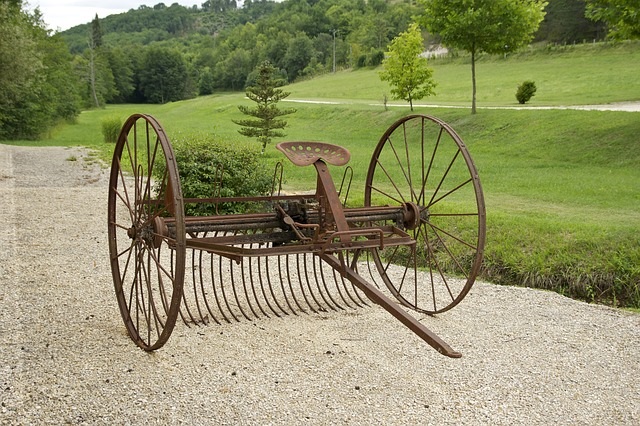
No, it’s not a yard ornament, although that was mostly what it was by the time I was growing up. It seemed like there was one in the corner of every field, but I never saw one being used. It’s a hay rake, sometimes called a dump rake. Before tractors, hay was essential on all farms as feed for horses and mules. If you had cows, it was even more critical. Since there was no good way to package and transport hay, farmers had to grow their own. In the early 1800s, making hay was very labor-intensive. It first had to be manually cut with a sickle or scythe, manually raked, and then manually pitch-forked onto a hay wagon. In the mid-1800s, horse-drawn mowers and rakes started appearing. They were somewhat primitive at first, but as they became more refined over time, they made the farmer up to 10 times more productive.
The hay rake shown with the steel bar attachment would tend to indicate it was most likely pulled by a tractor, but the design was basically the same if it was horse-drawn. The worker riding the rake would raise the rake’s tines (teeth) at the same points in the field, forming perpendicular rows of hay called windrows. From there, the hay was either piled up into haystacks or gathered into a wagon and stored in the upper floor of a barn. As far back as I can remember, though, people used a hay baler around here that was pulled by a tractor. My dad had one that produced rectangular bales tied with twine. These bales were easy to load and stack on a flatbed truck, making it much easier to transport and store.